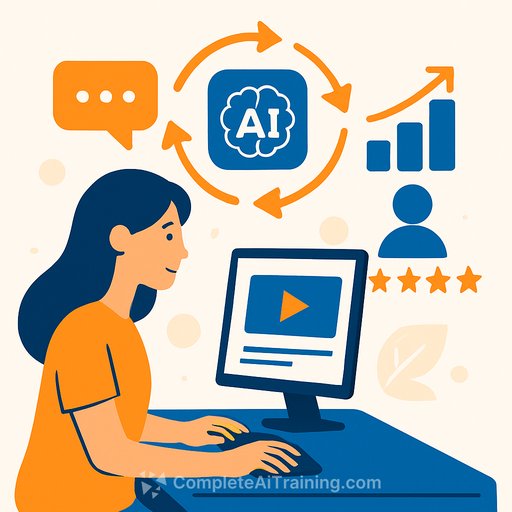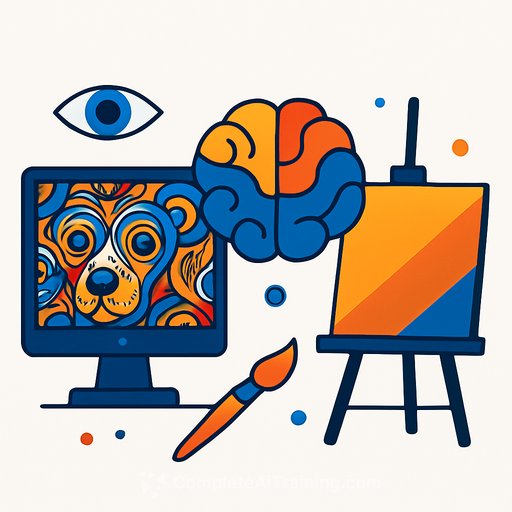AI Creative Production Performance: What Can We Learn From It
AI-generated creatives are everywhere. But the bigger opportunity lies in teaching AI—and the teams behind it—to truly understand what drives success and why. AI tools for creative production are still patchy. That’s why a fresh framework to automate creative production and improve user acquisition is vital. Here’s what launching hundreds of AI-powered ads has revealed.
After studying the 2025 AppsFlyer Creative Optimisation Report, which analyzed 1.1 million creatives and $2.4 billion in spend, one thing is clear: better performance demands more than just content volume. It requires smarter, automated learning loops.
AI Isn’t Just a Production Tool - It’s a Feedback Engine
Mass-producing creatives with AI is straightforward, but it only works when fed the right signals. The report shows the top 2% of creatives receive 43% of ad spend, highlighting a shift towards diversified portfolios to combat ad fatigue. The question is: how do you build a system—manual or AI-assisted—that genuinely learns?
Lesson 1: Train Your AI (and Team) on Outcome-Based Learning
In gaming, the top 2% of creatives grab 53% of spend; in non-gaming, 43%. This isn’t just about identifying winners; it’s a signal about how content is managed. App clients tend to test about 20 concepts weekly, while gaming clients lean heavily on tried-and-true winners, optimizing for short-term gains.
Non-gaming sectors spread risk by testing more concepts and expanding audiences with detailed creative testing. This leads to higher hook and hold rates—about 15% better on average than gaming clients.
Takeaway: Don’t just tag and analyze top performers. Look closely at the “long tail” creatives. Many overlooked ads show strong retention but aren’t pushed by algorithms. Improving hooks or hold rates on these quiet champions can boost installs per mille (IPM) and elevate them into top-performing concepts.
Lesson 2: Don’t Feed AI with Just Visuals—Feed It Motivations
Different industries respond to different emotional triggers. In finance, “instant gratification” drives installs. Dating apps thrive on “serious relationships.” Casual games perform better with “failure-to-success” stories rather than pure success narratives. AI can detect colors, hooks, and layouts, but what separates high-retention creatives is alignment with motivation.
Successful creatives grab attention in the first three seconds using tactics like UGC influencers, direct questions, or personal communication. If AI understands these emotional triggers, it can better target the right users.
Takeaway: Label creatives not just by format but by emotional triggers. Train both models and teams to identify why something works, not just what it looks like.
Lesson 3: Creativity Needs Context—Platforms Matter
The same creative can perform differently depending on where it runs. For example, casino games see “power” as a winning element on ad networks, but on social platforms, “completion” rates drive better IPM lifts. The context shapes the content’s success, which AI often misses without platform-specific input.
Takeaway: Train teams and AI scripts to analyze performance by platform. A TikTok hit may flop on YouTube. Build feedback loops that integrate channel-specific data. Always ask why a concept worked and how to evolve it to avoid ad fatigue and frequency caps.
Lesson 4: AI Needs Creative Feedback—And So Do We
Using internal tools to identify top-performing ad structures from competitors, combined with AppsFlyer’s Creative Optimisation Suite, creates smarter feedback loops. Automation isn’t about replacing judgment—it’s about improving it.
- Combine share of cost (SoC), IPM, and day-7 retention metrics, weighting them based on campaign goals.
- Label creatives by emotional and behavioral drivers.
- Test user-generated content (UGC) versus polished content and track results by segment.
- Monitor all important engagement and conversion metrics across channels using AppsFlyer's tools.
Let data lead production decisions—but don’t let it replace storytelling.
The New Creative Feedback Loop
- Generate content at scale (AI or otherwise).
- Tag and track creatives by motivator, channel, and format.
- Test across platforms (Meta, DSP, UAC, etc.).
- Learn from signals beyond click-through rate: include IPM, ROAS, and retention.
- Create smarter, more informed content continuously.
For those looking to sharpen AI creative skills, exploring targeted AI training courses can be a practical next step. You can find relevant resources at Complete AI Training.
Your membership also unlocks:





